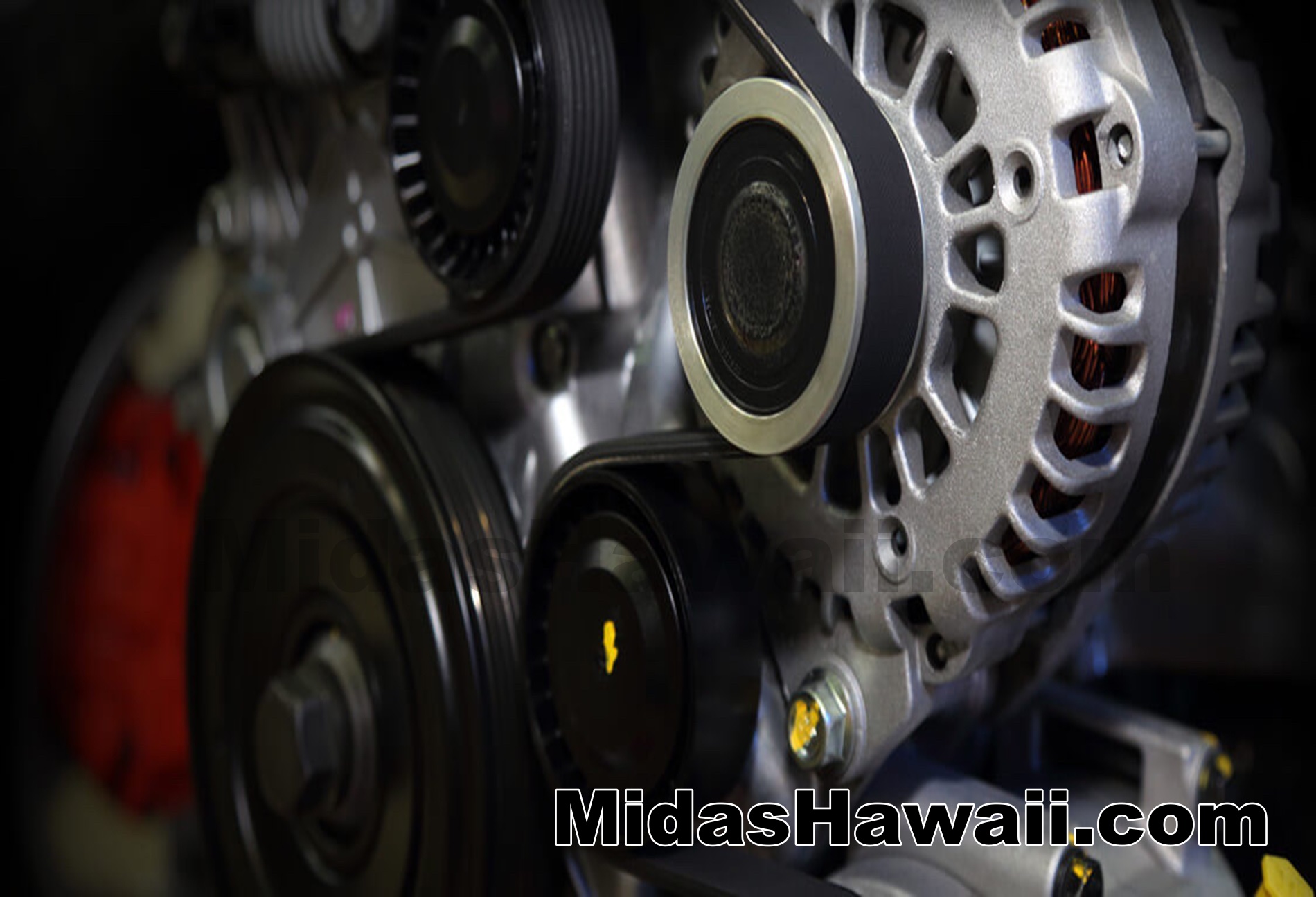Belts and Hoses
- Tweet
Back to the top
FAQ LEGEND
Back to the top
Belts & Hoses Questions
A. The belts and hoses in your vehicle may look unassuming, but they power nearly every feature in your vehicle. Hoses deliver hydraulic pressure to your brakes and other components. Belts transfer energy from the crankshaft to the moving parts that start, steer, heat, and cool your vehicle -- not to mention keeping your engine cranking correctly. A leaky hose or loose belt can impact the performance of the affected part. A broken belt or hose can disable your vehicle.
So head to Midas at the first sign of damage to your belts and hoses. Better yet, trust Midas with your regular vehicle maintenance routine. We'll take an expert look at your belts and hoses with every Midas Touch Courtesy Check1.
- Midas Touch Courtesy Check includes visual checks of brakes, battery, air filter, fluids, belts, and hoses.↩
A. There are several types of belts in a motor vehicle:
- Serpentine belt and other drive belts: Powers your alternator, climate control, and power steering with energy from the crankshaft.
- Timing belt or timing chain: Helps turn the camshaft of your engine, coordinating the rhythm of your engine valves and pistons. Also known as a gilmer belt or camshaft belt.
- Other automotive belts: Alternator belt, fan belt, power steering belt, A/C belt, and more. These belts work with your serpentine belt to drive their respective parts.
A. Here are some types of automotive hoses you'll most frequently hear about in your vehicle maintenance routine:
- Radiator hoses: Carry coolant (a mixture of water and antifreeze) between the engine and the radiator. Radiator hoses are made of strong rubber to withstand the dramatic temperature changes as the coolant absorbs heat from the engine and is cooled by the radiator.
- Heater core hoses: Carry hot coolant through your climate control system to warm your cabin. They're also made of durable rubber.
- Fuel hoses: In older vehicles, these connect the fuel tank to the engine. They require a type of rubber that can chemically withstand exposure to fuel. In modern vehicles, fuel is delivered via fuel-injection in pressurized metal tubes.
- Brake hoses: Carry brake fluid from the (metal) brake lines to the calipers.
- Air intake hoses: Carry oxygen to your engine to ensure the correct air/fuel mixture for combustion.
- Other automotive hoses: Help operate the systems in your vehicle, such as the power steering hoses, A/C high- and low-pressure hoses, PCV valve hose, and the oil cooler hose.
A. Here are some signs that your vehicle's belts and hoses need service:
- Chirping or squealing noise: Could be the sound of a loose or damaged belt, or possibly an oil or fluid leakage.
- Visibly loose belt: Replace the belt unless it's a serpentine belt designed for periodic manual adjustment.
- Visible belt or hose wear: Belts should be free of cracks, rust, or rib damage. Hoses should be free of holes and tightly connected.
- Leaking fluid around a hose or under your car: Any fluid leak should be evaluated by a mechanic.
- Battery problems: Your car doesn't start, your battery light is on, or the lights are dimmer in your cabin and on the instrument panel? Your alternator belt may be failing.
- Engine problems: Metal shavings in your engine oil, or the engine misfires, rattles, or won't start? Your timing belt or chain may need service.
- Vehicle system failure or overheating: Power steering, alternator, engine cooling, brakes, climate control: all can be disabled by a belt or hose failure.
Our Midas Auto Service Experts® take the time to thoroughly explain your vehicle's condition and tell you which problems are urgent and which can wait. (We'll know if that belt should be tightened or replaced.) We discuss the best options for your budget and provide a written estimate before making any repairs.
A. Metal and rubber car belts can squeal in reaction to temperature changes or from a need for maintenance:
- The belt is too tight or too loose: You're hearing the belt stretch or rub against a surface other than its pulleys. Have the belt adjusted or replaced before it breaks or slips off its pulleys.
- A pulley under the belt is worn: You're hearing friction from the pulley's worn bearings. Have the pulley replaced before it breaks -- in turn, disabling the affected belt.
Either way, have the belt serviced before it disables your starting, steering, or engine power. You could also find yourself vulnerable to overheating if the affected belt powers your cooling system.
A. Each belt in your car has a different lifespan:
- Serpentine belt: Typically replaced at 50,000-100,000 miles depending on your belt material and driving conditions. Tip: some serpentine belts are designed to be tightened regularly over the life of the belt. Older drive belts may have shorter lifespans.
- Alternator belt and other part-specific belts: Usually covered under the service and replacement schedule of the part.
- Timing belt: A typical timing belt lifespan is five years or 60,000 miles.
- Timing chain: Good news: timing chains are designed to last the entire life of your engine. The timing chain replaces the timing belt in many newer vehicles.
Check your owner's manual for the replacement cycle for each belt in your vehicle. And watch for alternate terminology like drive belt, v-belt, or camshaft belt.
ref no:34702
Please send questions about this website to webmaster
Terms of Use / Legal Disclaimer / Privacy Statement
Site Designed and Managed by MacBusiness Consulting

